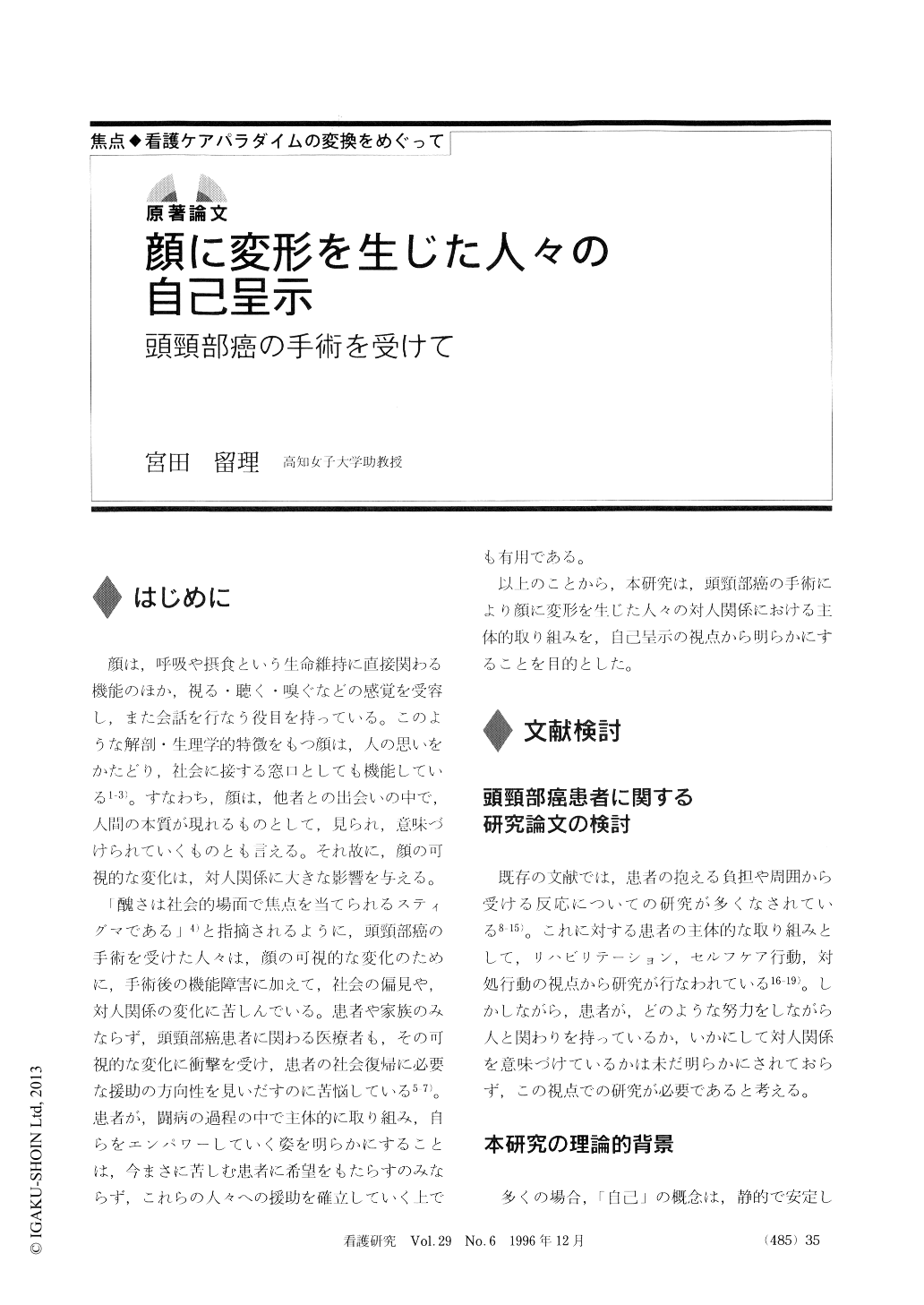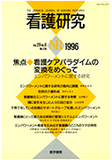Japanese
English
- 有料閲覧
- Abstract 文献概要
- 1ページ目 Look Inside
- サイト内被引用 Cited by
はじめに
顔は,呼吸や摂食という生命維持に直接関わる機能のほか,視る・聴く・嗅ぐなどの感覚を受容し,また会話を行なう役目を持っている。このような解剖・生理学的特徴をもつ顔は,人の思いをかたどり,社会に接する窓口としても機能している1-3)。すなわち,顔は,他者との出会いの中で,人間の本質が現れるものとして,見られ,意味づけられていくものとも言える。それ故に,顔の可視的な変化は,対人関係に大きな影響を与える。
「醜さは社会的場面で焦点を当てられるスティグマである」4)と指摘されるように,頭頸部癌の手術を受けた人々は,顔の可視的な変化のために,手術後の機能障害に加えて,社会の偏見や,対人関係の変化に苦しんでいる。患者や家族のみならず,頭頸部癌患者に関わる医療者も,その可視的な変化に衝撃を受け,患者の社会復帰に必要な援助の方向性を見いだすのに苦悩している5-7)。患者が,闘病の過程の中で主体的に取り組み,自らをエンパワーしていく姿を明らかにすることは,今まさに苦しむ患者に希望をもたらすのみならず,これらの人々への援助を確立していく上でも有用である。
以上のことから,本研究は,頭頸部癌の手術により顔に変形を生じた人々の対人関係における主体的取り組みを,自己呈示の視点から明らかにすることを目的とした。
Surgery for maxiofacial cancer is often radical and disfiguring, and therefore can have an influence on patient's interpersonal relationship and social activities. However, little is known about selfpresentation of disfigured patients during rehabilitation. This is an inductive and qualitative study based on 26 extensive interviews. The results demonstrate that patients with disfigurement cope actively with problems in their interpersonal relationship and even go through the empowerment process. Self-presentation of the disfigured patients consisted of four dimensions: (1)self-evaluation; (2)judgment of others' reactions; (3)intention of personal relations and style of self-presentation; and (4)concrete self-presentation using six “strategies”. Each of the dimensions 1-3 included several processes that were generally taken in sequence according to time after surgery, but also strongly influenced by behaviors of family members or medical staff. “Strategies” chosen in demension 4 depending upon the situations in dimensions 1-3 corresponded to the five type of “self-presentation” reported by Goffman (1959), except for “letting others be used to the patients”, which was one of the continuous efforts to overcome their chronic disfigurement. Importantly, the patients became confident by focusing upon their chronic disfigurement. Importantly, the patients became confident by focusing upon their healthy parts such as maxiofacial functions recovered to some degree, and this confidence led to the acceptance of disfigurement and further to the expansion of their social behaviors.

Copyright © 1996, Igaku-Shoin Ltd. All rights reserved.


